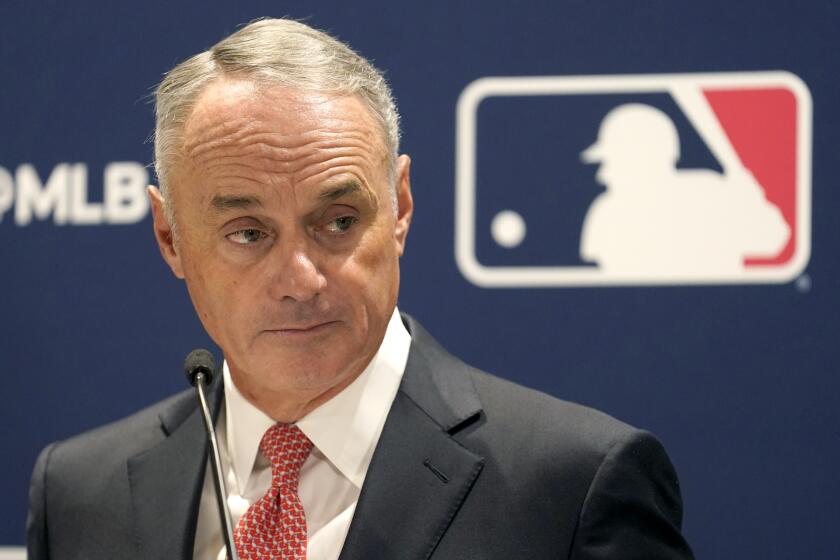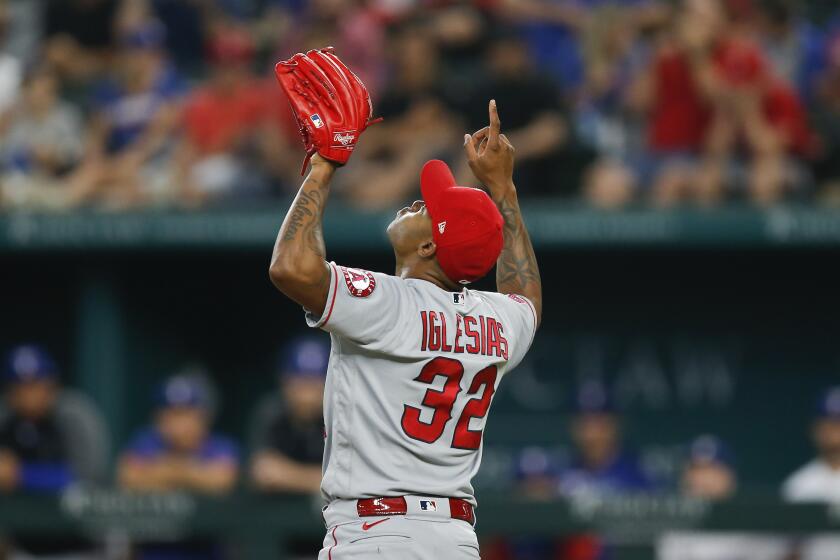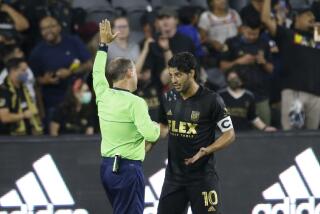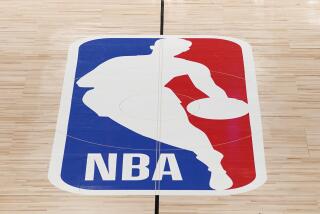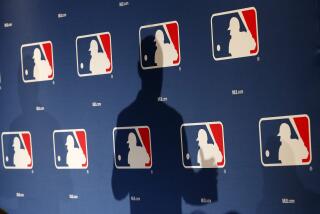MLB commences lockout as CBA expires, triggering first baseball work stoppage in 26 years
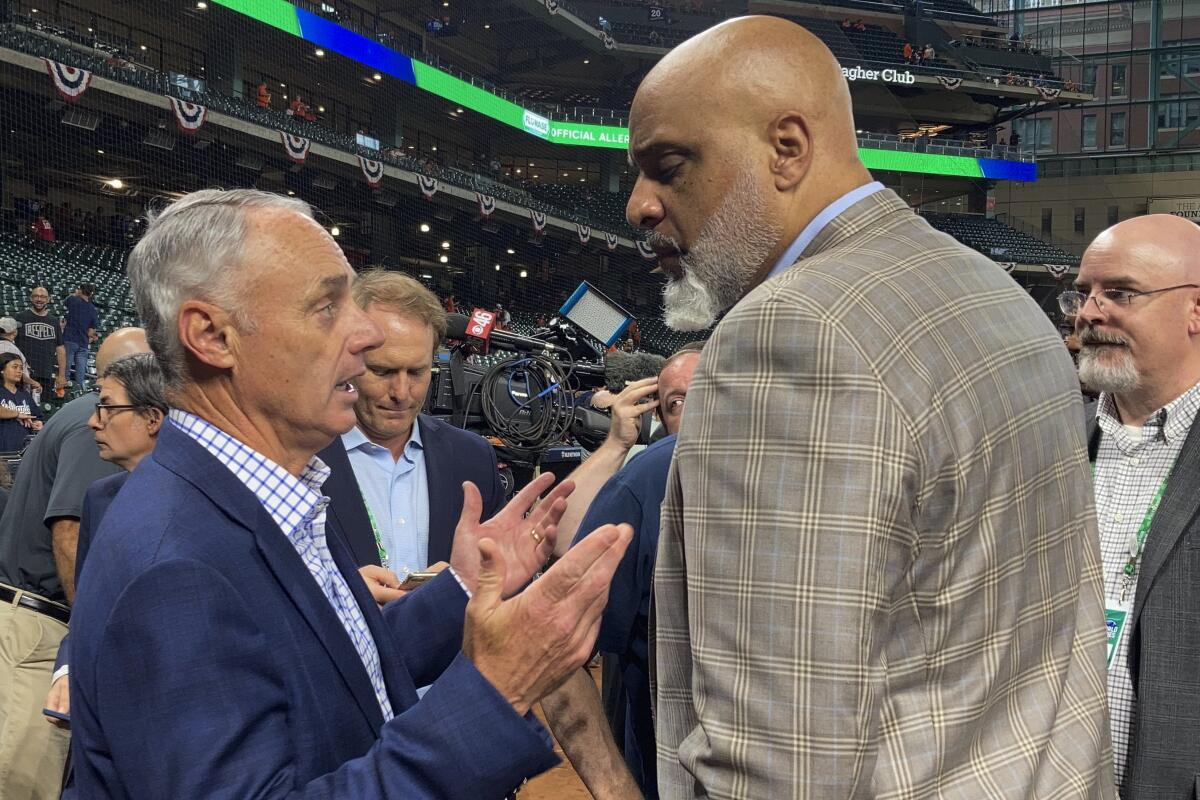
Precisely one minute before midnight EST Wednesday night, the baseball world stopped spinning.
Just as most people in the sport had long feared, the collective bargaining agreement between Major League Baseball and the MLB Players Assn. expired without a new agreement in place, triggering baseball’s first official work stoppage in more than a quarter-century.
Minutes after Wednesday night’s deadline passed, commissioner Rob Manfred announced in an open letter that the league had instituted a lockout — a move that will halt almost all offseason activity and, if it drags on long enough, potentially jeopardize the start of the season.
“We believe that an offseason lockout is the best mechanism to protect the 2022 season,” Manfred wrote. “We hope that the lockout will jumpstart the negotiations and get us to an agreement that will allow the season to start on time.”
MLB hasn’t had a lockout since 1990 and hasn’t experienced a work stoppage since players went on strike in 1994, causing that season to be canceled without crowning a World Series champion. In the 26 years since, baseball had been the only one of the four major American sports to not experience a work stoppage.
But after previously agreeing to four consecutive CBAs without an interruption, the most recent of which was struck in 2016, the players and owners couldn’t find enough middle ground this time.
Why is the MLB headed toward a lockout Wednesday night? How long might it last? What are all the issues? Here are the answers to many of your questions.
“As players, we see major problems with it,” newly signed New York Mets pitcher Max Scherzer, a member of the union’s executive committee, said Wednesday of the now-expired agreement.
The fact the league and the union failed to reach a new agreement before Wednesday’s deadline was no surprise. The sides had reportedly been far apart in negotiations, especially involving potential reforms to the sport’s economic structure regarding player salaries and team spending.
At the crux of the disagreement is a compensation model that players believe has led to depressed salaries. While top free agents are able to sign nine-figure deals, once-lucrative contracts for mid-tier players have dwindled in recent years as teams have begun to prefer younger alternatives with controllable salaries.
A variety of factors play into the issue: The amount of service time players must accrue before reaching free agency (players would like to be able to reach free agency sooner); the salary arbitration process that determines their compensation before they get there; and rules regarding a luxury tax that some teams treat as a de facto salary cap.
There are other issues at play too, from a draft structure players say has incentivizedtanking, and thus led some teams to purposely spend as little money as possible during years-long rebuilds, to potential rule changes impacting the style and pace of play.
In Manfred’s strongly worded letter, the commissioner pointed his finger at the union, saying “the Players Association’s vision for Major League Baseball would threaten the ability of most teams to be competitive. It’s simply not a viable option.”
Manfred added: “The MLBPA has been unwilling to move from their starting position, compromise, or collaborate on solutions.”
The MLBPA responded with its own statement, noting that the lockout was not required upon the CBA’s expiration (while lockouts aren’t typical in other types of labor negotiations, they have become commonplace in sports in such situations) and calling the shutdown “a dramatic measure.”
“It was the owners’ choice, plain and simple, specifically calculated to pressure Players into relinquishing right and benefits, and abandoning good faith bargaining proposals that will benefit not just Players, but the game and industry as a whole.”
Representatives from both the league and union have been negotiating throughout the year, but without much progress. At the owners meetings in mid-November, Manfred all but guaranteed a lockout if the CBA expired but remained hopeful it wouldn’t impact the 2022 season.
Just as they hoped, the Angels have struck a deal to keep their closer long term.
“An offseason lockout that moves the process forward is different than a labor dispute that costs games,” he said.
Still, the countdown for starting next season on time has officially begun. The annual December Winter Meetings were canceled Wednesday. Players are scheduled to report to camp in mid-February. Spring training games are slated to start near the end of the month. Opening day is March 31.
That’s the clock the two sides are now working against. They couldn’t meet Wednesday’s deadline. And until they overcome their differences, the rest of the sport will be stuck in the middle, waiting out a winter that is poised to be eerily still.
More to Read
Go beyond the scoreboard
Get the latest on L.A.'s teams in the daily Sports Report newsletter.
You may occasionally receive promotional content from the Los Angeles Times.

